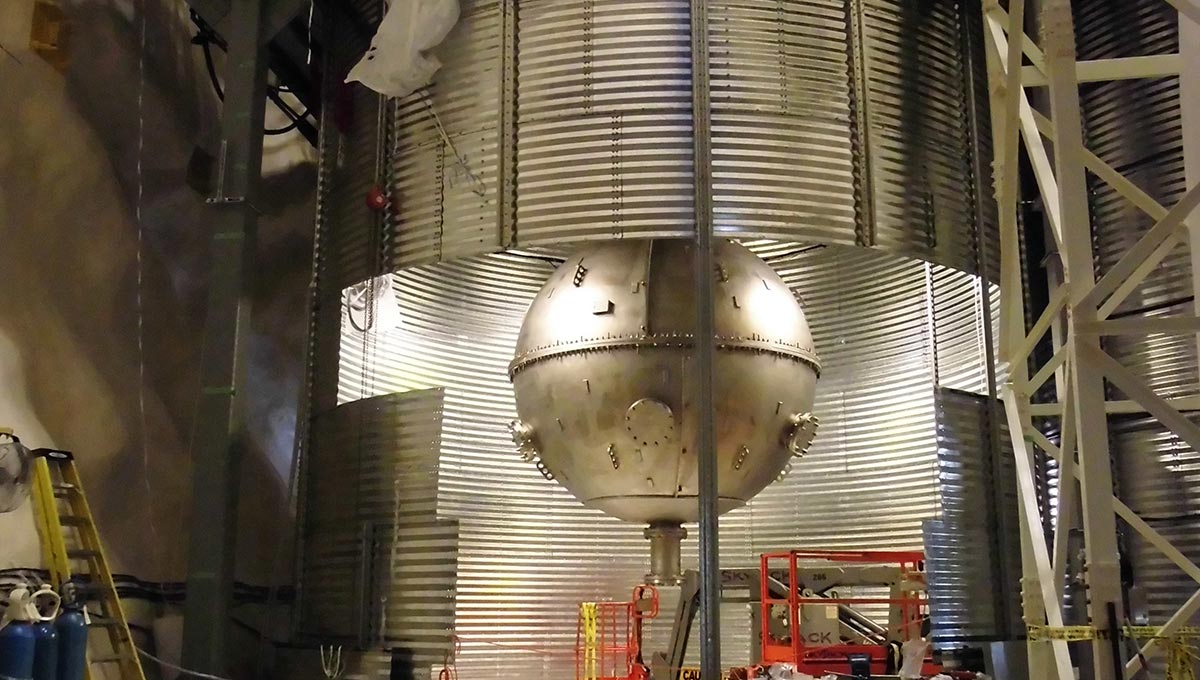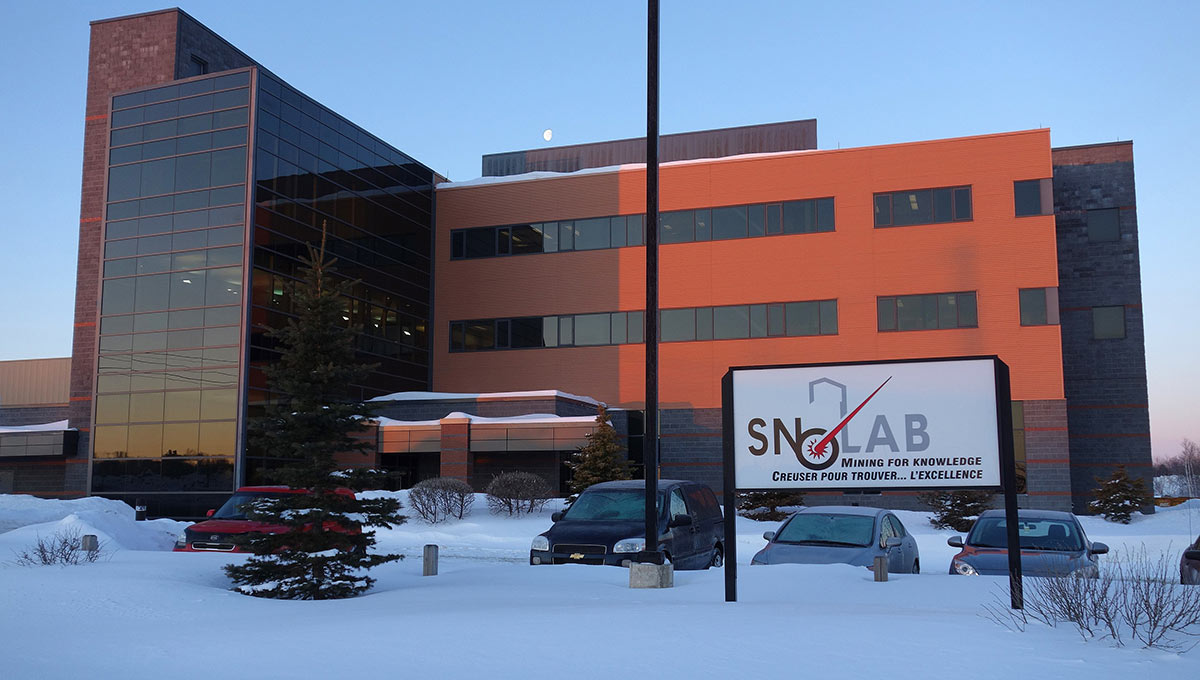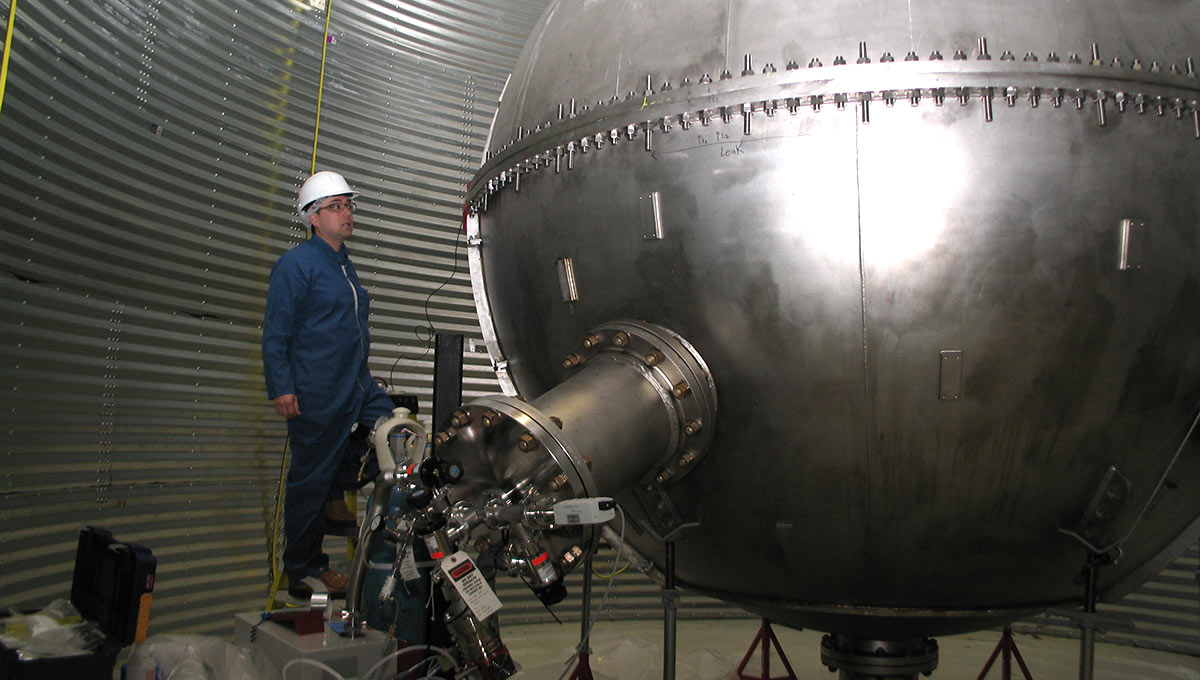Lead image by DominikBall / iStock
By Dan Rubinstein
The search for dark matter — a mysterious substance that comprises more than one-quarter of the universe — relies on experiments that satisfy two main requirements.
Particle physicists need to build a detector large enough to capture extremely rare interactions that release a small pulse of light. And their device must be sensitive enough to tune out the radioactive background noise that makes such observations even more challenging.
Two kilometres below the Earth’s surface at a nickel mine in Sudbury, Ont., DEAP-3600 is part of an ambitious long-term research program. The detector — operational from 2016 to 2020 and now being readied for a second run — is filled with 3.6 tons of liquid argon. That volume and all of the rock overhead helped researchers rule out higher mass particles in their quest to identify dark matter.

Canada Research Chair in Particle Astrophysics Mark Boulay
Now, bolstered by all of the scientific and technical knowledge generated by DEAP-3600, an international collaboration, with significant contributions from Carleton University, is developing a pair of next-generation detectors.
Even though dark matter is believed to outweigh the atoms we’re familiar with by a factor of five to one, its existence has only been inferred by its gravitational effects on stars and galaxies and other indirect measurements. But through the DarkSide-20k project and the proposed ARGO detector, Carleton’s Mark Boulay believes there’s never been a better opportunity for a breakthrough.
“ARGO, in a way, is the ultimate experiment,” says Boulay, the Canada Research Chair in Particle Astrophysics, who won a prestigious award for his dark matter research earlier this year.
“This is an exciting project with huge discovery potential.”

Carleton’s Central Role in Particle Physics Research
DEAP-3600 and the two new detectors-in-progress belong to a continuum of particle physics projects in which Carleton has played a central role.
The university helped build and conduct experiments in the underground SNOLAB facility in Sudbury, where work on the neutrino led to a Nobel Prize in 2015.
The use of argon in the quest to find dark matter has led to more advances; its unique properties allow researchers to study the recoil of scattering particles more effectively. No dark matter interactions have been observed through DEAP-3600, but its high level of sensitivity has led to more focused search parameters.

The surface building at the SNOLAB facility, located at an active nickel mine in Sudbury, Ont.
“In general, things have gone very well,” says Boulay, explaining that the retooled detector, with technical modifications to further reduce radioactive interference, will collect new data until the end of next year.
“It’s a process of elimination. Now we know some of the things we’re not looking for.”
DEAP-3600 has also triggered several scientific spinoffs, including precise measurements of the lifetime of an argon isotope that’s found in air bubbles in ice cores, which are collected to improve our understanding of past climates and environments. And ongoing work with Canadian Nuclear Laboratories in Chalk River, Ont., is supporting the development of screening devices that could eventually be deployed to stop nuclear materials at international borders.
But Boulay, who is collaborating with Carleton physics colleague Simon Viel and Distinguished Research Professor David Sinclair, hasn’t lost sight of the main goal.
“Dark matter makes up such a large part of our universe, yet we really don’t know what’s out there,” he says.
“It’s really hard to overemphasize the scientific importance of this field of study.”

More Sensitive than Other Dark Matter Detectors
The Global Argon Dark Matter Collaboration (GADMC) formed in 2017, right around when DEAP-3600 was coming online, to plan and build leading-edge detectors.
DarkSide-20k, which will instrument 20 tons of liquid argon, is currently under construction at the Gran Sasso National Laboratory inside a mountain in central Italy. Expected to start running in 2028, its size will make it significantly more sensitive than any previous dark matter detectors.
Boulay spent a year on site working on the project while on sabbatical; his group is delivering some of the hardware components. But they’re already looking ahead to ARGO, for which the Carleton team and GADMC are now seeking funding.

Prof. Boulay climbs a stepladder to inspect a cooling system built around a 3,000-litre tank of liquid nitrogen that’s part of the DEAP-3600 experiment
Still in the early stages of development, ARGO will be located inside SNOLAB and, with 300 tons of liquid argon, will be 10 times more sensitive than DarkSide-20k.
“This is the long-term program we sketched out when we created this international collaboration,” says Boulay, whose group is leading the conceptual design for ARGO. “We knew that even if DarkSide-20k discovers a dark matter signal, we will want to follow it up with a more sensitive experiment to further understand dark matter.
“Either we’ll see dark matter at this scale,” he adds, “or we’ll have to think of something else to do.”
That doesn’t mean, however, that this research is all or nothing.
“The scientific curiosity of trying to observe dark matter is very motivating,” says Boulay, “but there are also so many technical challenges that need to be solved, and for me, these are all interesting problems. I also enjoy working with and teaching students. Day to day, thinking about dark matter is just one part of the job.”
Wednesday, August 13, 2025 in Faculty of Science, Physics, Research
Share: Twitter, Facebook



